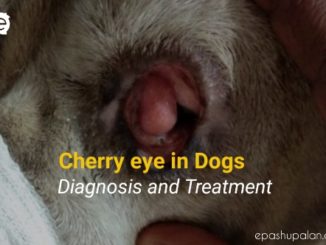Introduction
Among the cough causing infectious diseases canine bordetellosis, often synonymous to kennel cough, is one of the most prevalent respiratory infections of dogs. Kennel cough is characterized by frequent hacking and dry coughing, high morbidity but low mortality rate. Kennel cough is a multi–etiological disease but Bordetella bronchiseptica, is considered to be the main etiologic agent. Bordetella bronchiseptica, a Gram–negative bacterium, colonizes the respiratory tract of wide range of mammalian hosts including dogs, pigs, cats, rabbits, mice, rats, guinea pigs, sheep, horses and bears. The interspecies transmission of B. bronchiseptica has been reported among laboratory animals and between a rabbit and a human patient. It may be transmitted between cats and dogs that live in close proximity.
Clinical Features of Bordetellosis
Bordetellosis comprises of two clinical forms. The most common form of the disease is associated with dry hacking cough, gagging and retching behavior in dogs and such cases are usually mild or uncomplicated. The other form, the complicated form is characterized by wet cough (common in puppies or immuno–compromised dogs). The disease is associated with mucoid discharges, pyrexia, anorexia, chorioretinitis, vomiting and diarrhoea. Incubation period of the disease ranges between 1 to 8 days showing clinical signs for 1–2 weeks. Infected dogs were found to shed the pathogen for 2–3 months after clinical recovery.

Virulence Factors of Bordetella
Bordetella LPS is highly immunogenic, a major constituent of the outer cell membrane which acts as an important bacterial defense system against host immune responses including antibodies, antimicrobial peptides, complement and surfactants. The genus Bordetella exhibits several virulence factors such as adhesins, pertactin, filamentous hemagglutinin and fimbriae as well as the cytotoxic factor such as adenylate cyclase toxin (ACT). The expression of these virulence factors is controlled by the BvgAS two–component system in response to certain environmental stimuli. The regulatory system is characterized by antigenic modulation and phase variation. The antigenic modulation decides the activation and repression of synthesis of virulence factors whereas phase variation is the result of mutations in vir gene which also modulates virulence under appropriate cultural conditions.
Diagnostic Techniques
The diagnosis of bordetellosis depends mainly on the isolation of the B. bronchiseptica followed by the identification of the organism by serological, biochemical and molecular methods.
1. Bacterial Culture and Isolation
Bordetella pathogen grows readily on blood agar, Smith–Baskerville culture media and MacConkey agar at an optimum temperature of 37°C. Bordetella strains have phase 1 (smooth, small, convex and virulent) and phase 4 (rugged, large, and non–virulent) colonies. Biochemically, all strains are positive for catalase, oxidase and citrate utilization and are negative for fermentation of any sugar, production of gelatinase, indole, DNase and H2S.
2. Serological Methods
Due to difficulty in isolation, serological tests are often considered good alternative to facilitate diagnosis of kennel cough. Commonly employed serological tests include tube agglutination, indirect haemagglutination, micro–agglutination test and ELISA.
3. Molecular Diagnosis
Isolation and identification of B. bronchiseptica pathogen is a time consuming process and many serological techniques do not have good specificity in this regard. The efficacy of polymerase chain reaction (PCR) has been exploited to attain a fast and accurate detection of Bordetella in clinical samples. RAPD analysis and Ribotyping have already been combined by a few researchers to evaluate genetic relatedness among canine B. bronchiseptica isolates.
Vaccines
Researchers in India demonstrated that inactivated aluminium hyrdroxide gel B. bronchiseptica vaccine protected vaccinated mice against homologous B. bronchiseptica challenge.
1. Canine Intranasal Vaccination
Live avirulent intranasal vaccines that combine B. bronchiseptica with canine parainfluenza virus, along with trivalent products that also add canine adenovirus-2, were reported to have better protection than B. bronchiseptica vaccines alone. Puppies as young as 3 weeks of age can be successfully immunized as maternal antibodies do not block the response to vaccination. A more recent experimental study of the efficacy of an intranasal B. bronchiseptica product (NasaGuard-B, Pfizer) found that puppies vaccinated once at 18 weeks of age and challenged 2 weeks later had significantly less coughing frequency than the healthy controls. Total leukocyte counts were lower, serum IgG and salivary IgA and IgG antibody levels were higher in the vaccinated than in control puppies. However, puppies vaccinated with both injectable and intranasal vaccines in sequence showed a significant reduction in coughing and higher antibody titres compared with controls and those vaccinated only intranasally.
2. Canine Injectable Vaccination
bronchiseptica bacterins are also available as injectables which can be administered subcutaneously or intramuscularly. These vaccines stimulate the systemic immunity characterized by high serum antibody (IgG) levels and have recently been shown to stimulate serum IgA and, to a lesser extent, salivary IgG and IgA. Current vaccines have a much lower reaction rate probably due to purification of the products to remove cell-membrane toxins and extraneous material.
Vaccination recommendations
The AVMA Council on Biologics and Therapeutics (COBTA) classifies both canine and feline vaccines for B. bronchiseptica infection as “noncore” in a recent report. Noncore vaccine products are described by COBTA as meeting one or more of the following conditions-
- Limited potential for exposure to the disease because of lifestyle or geographic region.
- Lower virulence representing less severe illness.
- Benefit:risk ratios too low to warrant use in all circumstances.
- Inadequate scientific information to evaluate clinical need, efficacy and safety.
More specifically, COBTA states that the efficacy of canine intranasal Bordetella vaccines is moderate, whereas that of parenteral vaccines is low. Routine vaccination is not indicated, but the use of an intranasal vaccine about 2 weeks before exposure appears to have beneficial results. For cats, COBTA states that vaccine efficacy is low and the duration of immunity is short.
Zoonotic Importance
Bordetella bronchiseptica infection in humans is rare but has been documented in both healthy and immuno–suppressed individuals. Intranasal vaccination in dogs may be one of the major risk factor for humans. Pneumonia, sepsis, and death have been reported after infection in human beings.
Prevention
Pets are vulnerable to B. bronchiseptica infection in crowded areas, such as in kennels, pet stores, breeding facilities and dog shows. General recommendation include 10 to 15 air changes per hour, a relative humidity of 50% to 65% and an ambient air temperature of 70°F to 75°F for stopping the spread of the pathogen. Thorough cleaning of cages, walls, floors, and bowls with routine disinfectants diluted 1:32 with water is essential. Pet owners should be aware of the risk of contagion and try to minimize contact with dogs and cats that show signs of respiratory sickness. Affected animals should be kept at home or in proper isolation facilities until clinical signs resolve. In addition to these preventive measures, canine Bordetella vaccines have been used to control outbreaks of infectious tracheobronchitis and to protect individual dogs. A feline B. bronchiseptica vaccine was also recently introduced for disease prevention in cats.
Conclusions
Kennel cough is one of the severe respiratory tract infections of dogs mostly in close confinements. Being a multi–etiological disease, the identification of the pathogen is a bit difficult. In developing countries including India, majority of bordetellosis cases remain undiagnosed. This disease has major importance for dog breeders and army stations where dogs are kept in close association. This disease is of special concern due to its contagiousness. Due to difficulty in diagnosis; rapid and reliable tests need to be developed and evaluated to reveal its epidemiology in developing countries. The MAT can serve as a better diagnostic test than ELISA but it lacks the desired sensitivity and specificity. Moreover, attempts for development of risk free vaccines are also needed to combat bordetellosis in pets.
| The content of the articles are accurate and true to the best of the author’s knowledge. It is not meant to substitute for diagnosis, prognosis, treatment, prescription, or formal and individualized advice from a veterinary medical professional. Animals exhibiting signs and symptoms of distress should be seen by a veterinarian immediately. |








Be the first to comment